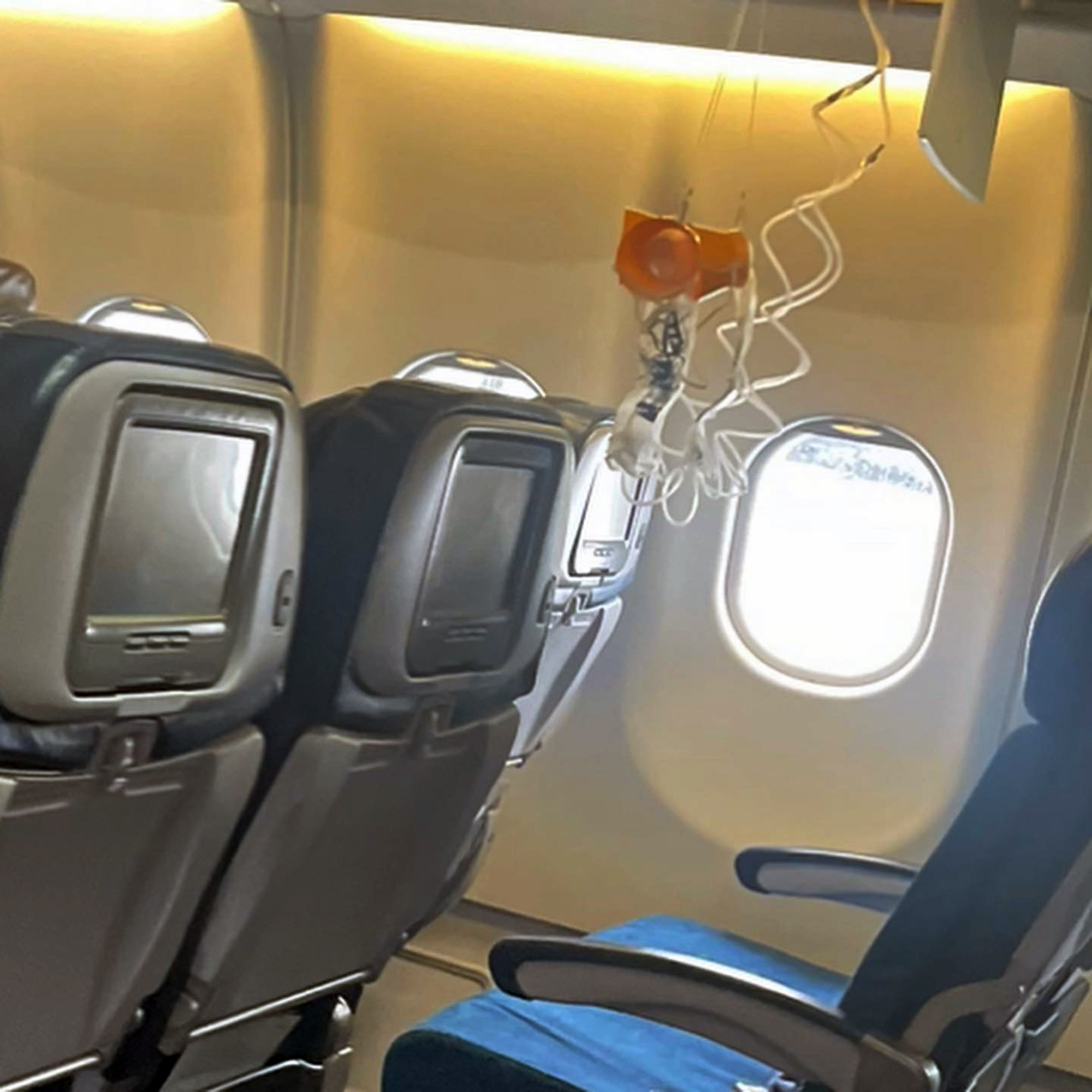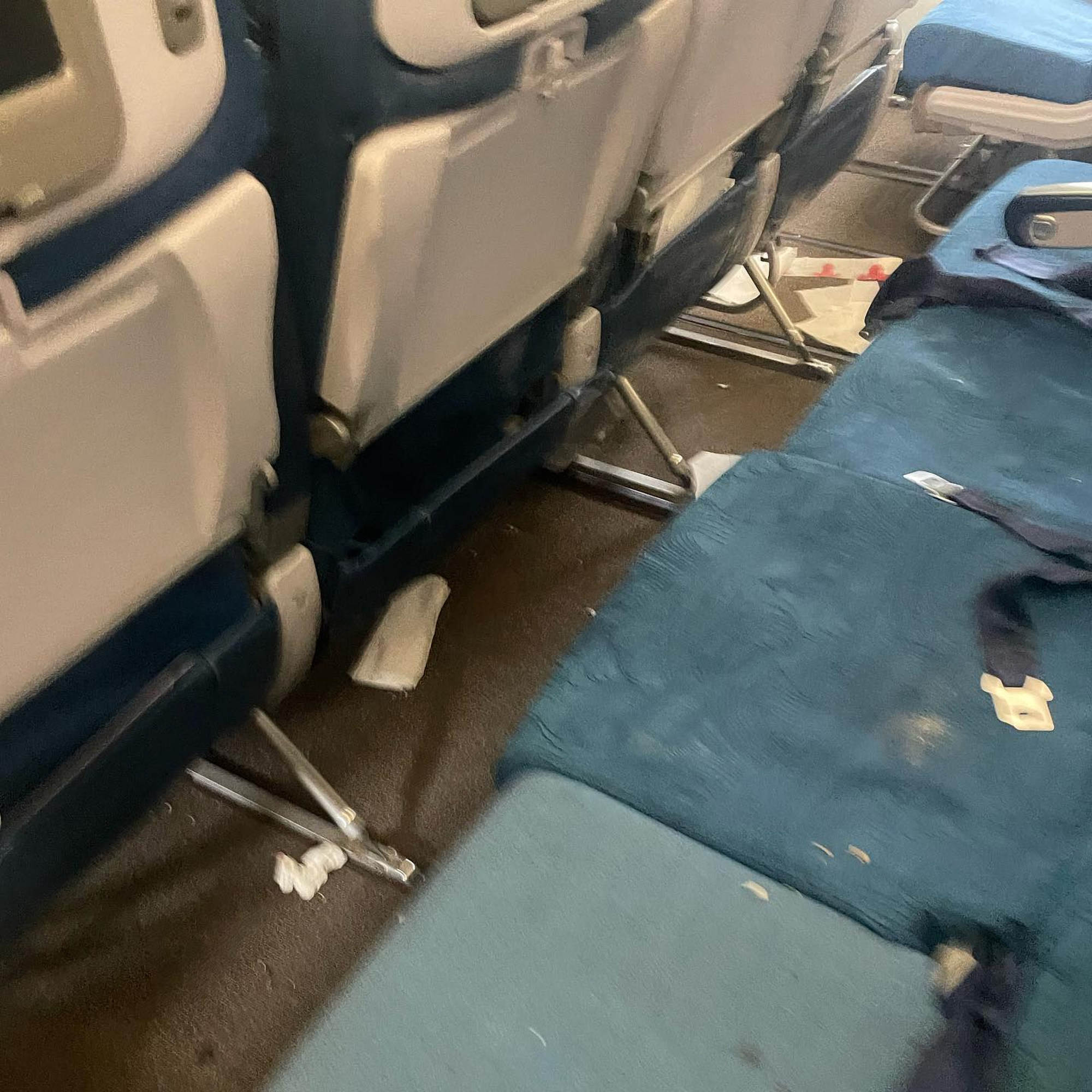
Photos show aftermath of turbulence-hit Hawaii flight that injured dozens of passengers
- Some three dozen people were injured, 11 of them seriously, when a Hawaiian Airlines flight to Honolulu was hit by severe turbulence
- One passenger said her mother ‘flew up and hit the ceiling’ as turbulence hit and did not have a chance to buckle her safety belt
Severe turbulence rocked a flight from Phoenix to Honolulu on Sunday, seriously injuring 11 people in what an Hawaiian Airlines official called an isolated and unusual event.
Jon Snook, the airline’s chief operating officer, said the airline hasn’t experienced “an incident of this nature in recent history”.
The flight was full, carrying 278 passengers and 10 crew members, he said.
Jim Ireland, director of Honolulu Emergency Medical Services, said 36 people received treatment, including those with nausea or minor injuries. He said 20 people were taken to hospitals, including 11 people deemed to be in serious condition.
The injured included three flight attendants, Snook said.
“We are also very happy and we feel fortunate that there were not any deaths or other critical injuries. And we’re also very hopeful that all will recover and make a full recovery,” Ireland said.
Why China Eastern flight’s ‘black boxes’ are vital to investigation
Passenger Kaylee Reyes told Hawaii News Now that her mother had just sat down when the turbulence hit and did not have a chance to buckle her safety belt.
“She flew up and hit the ceiling,” Reyes said.
Another passenger, Jazmin Bitanga, said that the plane experienced two “intense” altitude drops and that during one her boyfriend’s water bottle hit the ceiling so hard it caused a crack.
She also said people around her were crying and bleeding.

Snook said there was some internal damage to the aircraft during the turbulence. The seat belt sign was on at the time, though some of those injured weren’t wearing their seat belts, he said.
Thomas Vaughan, a meteorologist with the National Weather Service in Honolulu, said there had been a weather advisory for thunderstorms that included Oahu and areas that would have included the flight path at the time of the incident.
The airline was aware of the weather forecast and the unstable air and weather conditions, but had no warning the particular patch of air where the turbulence occurred “was in any way dangerous,” Snook said.
10 things flight attendants know about flying that you probably don’t
He didn’t know how much altitude the plane lost during the turbulence, saying that would be part of an investigation involving the National Transportation Safety Board. The plane’s flight data recorder would provide those details, he said.
The Airbus A330-200 began its descent immediately after the turbulence and crew declared an emergency due to the number of injuries on board, he said. Air traffic controllers gave the flight priority to land.
The aircraft will undergo an thorough inspection and maintenance, mostly to fix components in the cabin, Snook said.

Snook said he could only speculate whether some passengers hit their heads, but that was likely based on the injuries and the damage to cabin panelling.
“If you don’t have your seat belt on, you stay where you are as the aircraft goes down and that’s how those injuries occur,” Snook said.
The investigation will examine what other measures were taken, aside from turning on the fasten seat belt sign, to ensure passengers were buckled in, he said.
At least 19 dead as Tanzania passenger plane crashes into Lake Victoria
In 2019, 37 passengers and flight crew members were injured when an Air Canada flight from Vancouver to Sydney hit intense turbulence about two hours past Hawaii.
The Boeing 777-200 was diverted to Honolulu, where the injured received treatment. Thirty people were taken to hospitals and nine had serious injuries.
Over the Atlantic, a 2017 American Airlines flight from Athens hit severe turbulence along the New York coastline. Seven crew members and three passengers were injured.

Most people associate turbulence with heavy storms. But the most dangerous type is so-called clear-air turbulence.
The wind-shear phenomenon can occur in wispy cirrus clouds or even clear air near thunderstorms, as differences in temperature and pressure create powerful currents of fast-moving air.
Planes can sail into clear-air turbulence without warning.
Additional reporting by Reuters and Business Insider

